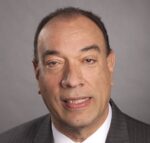Paul Scrivener and Rob Humphries, of the insurance group at Cayman Islands law firm, Solomon Harris, take a look at what has been happening in Cayman’s captive insurance sector this year.
It has been a busy year to date for Cayman’s captive insurance sector. As a result of a relatively modest number of new formations in 2014 and 2015, compared to prior years, there had been some disquiet in Cayman that growth was slowing perhaps in the face of increasing competition from US captive domiciles. However, that seems to be roundly disproved by 2016 to date.
As at 30 June 2016, 23 new licensees had been formed, one more than the total number of formations for the full year in 2015 and equal to the total number of formations in 2014. In contrast, Vermont, the largest US captive domicile, has registered 11 new captives in the first seventh months of the year and Dave Provost, deputy commissioner of captive insurance at the Vermont Department of Financial Regulation, speaking at the recent VCIA, indicated that this showed that Vermont was “doing great”. So, we are not sure what he would say if Vermont had as many new licensees as Cayman!
All but five of the new entrants fall under the B licence classification (captives) with four being class C insurers (special purpose or fully collateralised) and one being a class D licensee (reinsurers), Alesia Re being particularly noteworthy. Alesia Re is the first reinsurer of its kind in the Cayman Islands with its focus on pension risk transfer and associated risk portfolios.
Shortly after Alesia Re received its approval from the Cayman Islands Monetary Authority, Richard Kearns, Alesia Re’s chief executive officer, said that the reinsurer chose to headquarter and domicile in the Cayman Islands because of the jurisdiction’s “unique collaborative approach, which provides for robust regulation with an attractive business environment.” He went on to say: “The Ministry for Financial Services and the Cayman Islands Government, the Cayman Islands Monetary Authority, and Cayman Finance, as well as its professional service community members, have been exceedingly supportive and have demonstrated a commitment to growing the Cayman Islands’ presence in the international reinsurance sector.”
Interestingly, Alesia Re availed itself of Cayman’s relatively new portfolio insurance company legislation in its structuring (of which more later). Cayman remains extremely committed to building a book of reinsurance business and the arrival of Alesia Re is a very positive indicator that there is no reason why this ambition can’t be realized over the medium to longer term.
So, two very encouraging quarters for the sector, particularly bearing in mind that in most years there tends to be an acceleration of new licensees towards year end. It will be very interesting to see what the full year number looks like. This level of activity has translated into a busy time for the insurance managers and the law firms, not least our own firm which has worked on some forty per cent of the new formations this year.
Four of the new licensees are group captives taking the total number of group captives up to 128, writing aggregate premiums of almost US$2bn. Borne out by our own experience, there does appear to be something of a trend of increasing interest in group captives at the present time.
This is particularly encouraging news for the jurisdiction in that group captives require specialist expertise and generally involve significantly more work for insurance managers, auditors, lawyers and other service providers when compared to the traditional single parent captive.
There is also the not insubstantial trickle down benefit for the Cayman tourism sector as large groups meeting on Island inevitably provide a welcome boost for hotels, restaurants and other businesses in that sector.
The cell company structure – segregated portfolio companies or SPCs as they are called in Cayman – seems to be of ever increasing popularity and appears to have been boosted by the growing awareness of the additional benefits that portfolio insurance companies can provide.
Seven new SPCs have been formed in 2016 so far and, in addition, one of our clients converted this year from a single parent captive to an SPC. There may have been other similar conversions as this particular statistic is not currently publicly available. This takes the total population of SPCs to 145.
There can be a number of reasons why an SPC is seen as an attractive proposition. Cost saving through the economy of scale that a cell captive can offer is obviously one reason, however, a common theme that we currently see is a desire to maximize the use of a captive by being able to write a level of third party business without the risk of financially impairing the sponsor’s existing program(s).
In many instances the third party business may not be truly “third party”. So, for example, as was the case with our client that converted to an SPC earlier this year, the segregated program to be established, and the driver for an SPC structure, might be for the hospital system’s self-employed physicians. Another type of “third party” might be a joint venture partner or another affiliated entity. Even where there is no immediate prospect of separate cells being required but the potential for them is definitely on the radar, a sponsor will frequently form an SPC from the outset to avoid the costs and administration involved in a subsequent conversion of a regular captive to an SPC.
So, what impact have portfolio insurance companies, or PICs for short, had? Briefly to recap, PICs were introduced into Cayman’s Insurance Law in early 2015 as a means by which a cell of an SPC could effectively become incorporated and have its own legal personality. An unincorporated cell of an SPC is not a legal entity in its own right and therefore cannot contract with other cells of its SPC (e.g. for risk pooling or quota sharing purposes) or have its own board of directors.
There is also a level of uncertainty as to the US tax status of an unincorporated cell. A PIC overcomes all of these drawbacks because it is a company in its own right, albeit that for regulatory reasons it must at all times be under the control of a “parent” SPC. We were closely involved in the development of the PIC legislation and certainly did not envisage a stampede of PIC formations from the outset. That assessment has turned out to be right.
There are currently six PICs registered with the Cayman Islands Monetary Authority (CIMA) with some others in the pipeline – but what we are seeing is that virtually every SPC that we have worked on over the past few months is talking about the likelihood of establishing one or more PICs in the near to medium term. There is also a good deal of chatter about PICs in the industry. Like anything that is new, there is inevitably a time lag whilst consultants and sponsors do their due diligence.
What we are identifying is a number of attractive features of PICs that may not have been obvious at first sight and which go beyond the core benefits of intra-cell contracting, providing a corporate governance mechanism and tax certainty. So, for example we are currently advising one client where the use of a PIC will enable a Bermuda captive in run-off to be amalgamated with a Cayman SPC in circumstances that would otherwise not have been legally possible.
In another situation by utilizing a PIC it will be possible for a cell program of an SPC to be novated to a new SPC without the complications of having to work through the usual loss portfolio transfer. Our hunch is that we will see an acceleration in PIC formations over the next year as knowledge and experience of them continues to grow.
A question that we are often asked at SPC board meetings is whether we have had a judicial case yet where the integrity of the legal segregation of assets and liabilities has ever been challenged. The answer is not yet, certainly not in Cayman and no other jurisdiction as far as we are aware.
However, in 2015 decisions in Montana and Maryland were certainly helpful in demonstrating clear judicial support for the integrity of the legal segregation. This year a Guernsey case involving an investment fund cell company, rather than an insurance vehicle, caused some consternation when the judge essentially made the wrong decision and allocated various costs amongst the cells contrary to the segregation requirements. This was probably an aberration and specific to its own facts. However, the Guernsey legislature moved quickly and passed legislation in July to affirm the segregation principle within a cell company, underlining the importance of the cell company to Guernsey’s financial services industry.
The continuing consolidation of the US healthcare industry on the back of the Affordable Care Act is still having its effect in Cayman. Subsequent to the onshore merger at the parent level, during the post-merger integration attention turns to the captives of the enlarged group. In many instances, it is concluded that those captives need to be amalgamated on grounds of efficiency and cost saving. Frequently, the underlying captives will be Cayman domiciled and the best way to amalgamate them will be to utilize the statutory merger provisions of the Cayman Islands Companies Law.
This statutory process has proved to be a very effective way to achieve the amalgamation and a significant number of captive mergers have been completed in Cayman. The same process can work equally well where one of the merging captives is not Cayman domiciled as long as there is no prohibition under the laws of the jurisdiction where the overseas captive is domiciled.
Of course where the captive which “disappears” as part of the merger is Cayman domiciled, that is a loss for the jurisdiction and so not a popular outcome for the Cayman service providers but it is almost inevitable because of the huge number of Cayman healthcare captives. Fortunately, where the merger is between a Cayman captive and a foreign captive, more often than not the decision by the parent is to retain the Cayman captive and let the foreign captive fall away.
An important development in April this year was CIMA’s introduction of the Rule on Corporate Governance. The Rule mandates all captives (and most other insurers) to adopt a corporate governance framework. The primary objective of the Rule is to ensure that Cayman is in compliance with the Insurance Core Principles promulgated by the IAIS. An important feature is that the Rule stipulates that an insurer’s corporate governance framework should be commensurate with the size, nature and complexity of its business.
In other words, CIMA has avoided a “one size fits all approach” and recognises that the framework can be tailored to the circumstances of each individual captive. This is clearly sensible and consistent with Cayman’s proportionate regulatory regime. For example, the corporate governance requirements on a single parent captive insuring only first party risk should not be the same as for an open market reinsurer. Currently, Cayman captives are assessing the best way to implement the Rule.
For many it will be a case of supplementing their existing policies and procedures with some additional documentation but inevitably there will be those that will need a more “root and branch” overhaul of how they currently operate. Fortunately, the Rule is not unduly detailed or prescriptive and therefore there will be no need for the development of lengthy corporate governance manuals.
Finally, we would be remiss not to mention the recent appointment of Ruwan Jayasekera as the permanent head of the Insurance Division of CIMA. Ruwan has been part of the Division for almost eight years and has demonstrated excellent technical skills combined with a practical approach to insurance regulation. This is a very good appointment and finally puts to rest the somewhat awkward conversations that we have all been having for a while with industry stakeholders about the absence of a permanent head.
So, as we move through the third quarter of 2016, the captive insurance industry in Cayman has much to be optimistic about. Whilst there are challenges, the jurisdiction is in a very good position to continue to attract a steady flow of good quality business. The fundamentals of the domicile are nicely summarised in a recent SEC filing made by an insurer called Global Indemnity that is planning to return to Cayman after re-domesticating to Ireland six years ago.
In explaining its rationale for doing so to the SEC, Global Indemnity referred to the “business friendly regulatory environment” and “predictable legal framework” and the fact that Cayman has “a flexible and stable legal and corporate governance framework, which allows a company’s board of directors’ latitude to exercise its judgment in what it deems to be in the best interests of the company, particularly with respect to extraordinary transactions.” Clearly, the grass in Ireland wasn’t actually greener after all!






